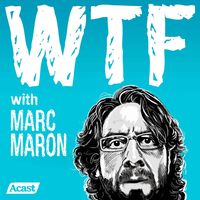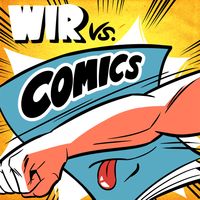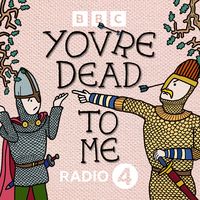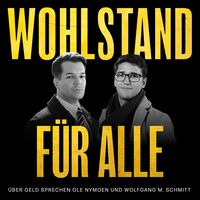The Cold War, Prohibition, the Gold Rush, the Space Race. Every part of your life - the words you speak, the ideas you share - can be traced to our history, but how well do you really know the stories that made America? We'll take you to the events, the times and the people that shaped our nation. And we'll show you how our history affected them, their families and affects you today. Hosted by Lindsay Graham (not the Senator). From Wondery, the network behind American Scandal, Tides of History, American Innovations and more.You can binge new seasons of American History Tellers early and ad-free on Wondery+. Join Wondery+ in the Wondery app or on Apple Podcasts.
https://wondery.com/shows/american-history-tellers/?utm_source=rss
Gesamtlänge aller Episoden: 9 days 9 hours 28 minutes
recommended podcasts
- season 1
- season 2
- season 3
- season 4
- season 5
- season 6
- season 7
- season 8
- season 9
- season 10
- season 11
- season 12
- season 13
- season 14
- season 15
- season 16
- season 17
- season 18
- season 19
- season 20
- season 21
- season 22
- season 23
- season 24
- season 25
- season 26
- season 27
- season 28
- season 29
- season 30
- season 31
- season 32
- season 33
- season 34
- season 35
- season 36
- season 37
- season 38
- season 39
- season 40
- season 41
- season 42
- season 43
- season 44
- season 45
- season 46
- season 48
- season 49
- season 50
- season 51
- season 52
- season 53
- season 54
- season 55
- season 56
- season 57
- season 58
- season 59
- season 60
- season 61
- season 62
- season 63
- season 64
- season 65
- season 66
- season 67
- all
- 1
- 1
episode 1: Supreme Court Landmarks | The Predicament of John Marshall
After the War of Independence, the new American government created the Supreme Court to be have the final word on disputes that the states couldn’t settle. But at first, the Court was anything but Supreme. For nearly a decade, Congress and the President held the real power. In practice the Supreme Court was weak, ineffectual and disorganized – a post so unappealing that many men turned down nominations to serve on its bench...
episode 2: Supreme Court Landmarks | The Cherokee Cases
In the early 1800s, the United States was growing rapidly, seeking land and resources for its expanding population. But the growth threatened Native American communities throughout the East. In the southern Appalachia region, the Cherokee Nation held millions of acres of prime farmland and forests, managed by a centuries-old tradition and a thriving government. But the state of Georgia, and a relentless President Andrew Jackson, set their sights on seizing the land...
episode 3: Supreme Court Landmarks | Separate and Unequal
After the Civil War, America began to rebuild a shattered nation. For the first time, the country could create a society without slavery, and a nation where Black people could forge their own path as independent citizens. But by the 1890s, the laws and policies that promised new rights for Black citizens in the South were under assault. In Louisiana, white politicians attempted to turn back the clock on racial progress by passing the Separate Cars Act and reinstating segregation...
episode 4: Supreme Court Landmarks | Loaded Weapon
Through most of 1941, as fighting raged across Europe, the United States held back from entering the war. That all changed in December, when Japanese fighter planes bombed Pearl Harbor and the nation found itself mobilizing for World War II. Suddenly, the frenzy to fight enemies abroad turned to suspicion against those at home. President Roosevelt signed Executive Order 9066, giving the military the power to detain and permanently jail over 110,000 Japanese Americans living on the West Coast...
episode 5: Supreme Court Landmarks | The Warren Court
Before the 1950s, the Supreme Court was best known as an institution that adhered to the status quo. It often sought to protect the rights of property owners and businessmen, shying away from cases that took direct aim at controversial social or political issues. But when a popular former California governor became Chief Justice in 1953, all that changed...
episode 6: Supreme Court Landmarks | A Recount in Florida
The morning of Nov. 8, 2000, Americans woke up to an undecided election. Pollsters had predicted a close race between Vice President Al Gore and Texas Governor George W. Bush, but no one knew just how narrow the margins would be. It all hinged on Florida, where 25 electoral votes were up for grabs. Over the next 36 days, armies of lawyers waged a bitter fight to determine how to count the votes in Florida. It was a battle that would eventually find its way to the Supreme Court...
episode 7: Supreme Court Landmarks | Jane Roe
In 1970, a 22-year-old woman in Texas named Norma McCorvey tried and failed to get an abortion from her doctor. Abortion was illegal in Texas, just as it was in most states. Women hoping to terminate their pregnancies had few options, and many resorted to risky back-alley procedures. McCorvey was soon introduced to a pair of young lawyers who hoped to go to court to challenge the Texas law banning abortion. Before long, McCorvey became the plaintiff known only as “Jane Roe...
episode 8: Supreme Court Landmarks | The Outsize Power of the Supreme Court Today
Throughout our series, we've seen how social movements and partisan politics helped influence the decisions of landmark U.S. Supreme Court cases, and thus shape America itself. But how did the Supreme Court get so powerful when America's founders imagined a more limited role? Today, the idea of court-packing, first proposed by Roosevelt to push through his New Deal agenda, is back as a way to rein in the power of the Court...
- 1
- 1








































